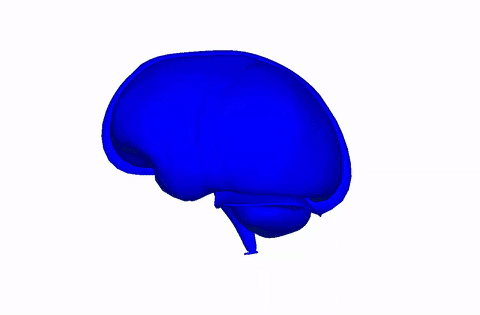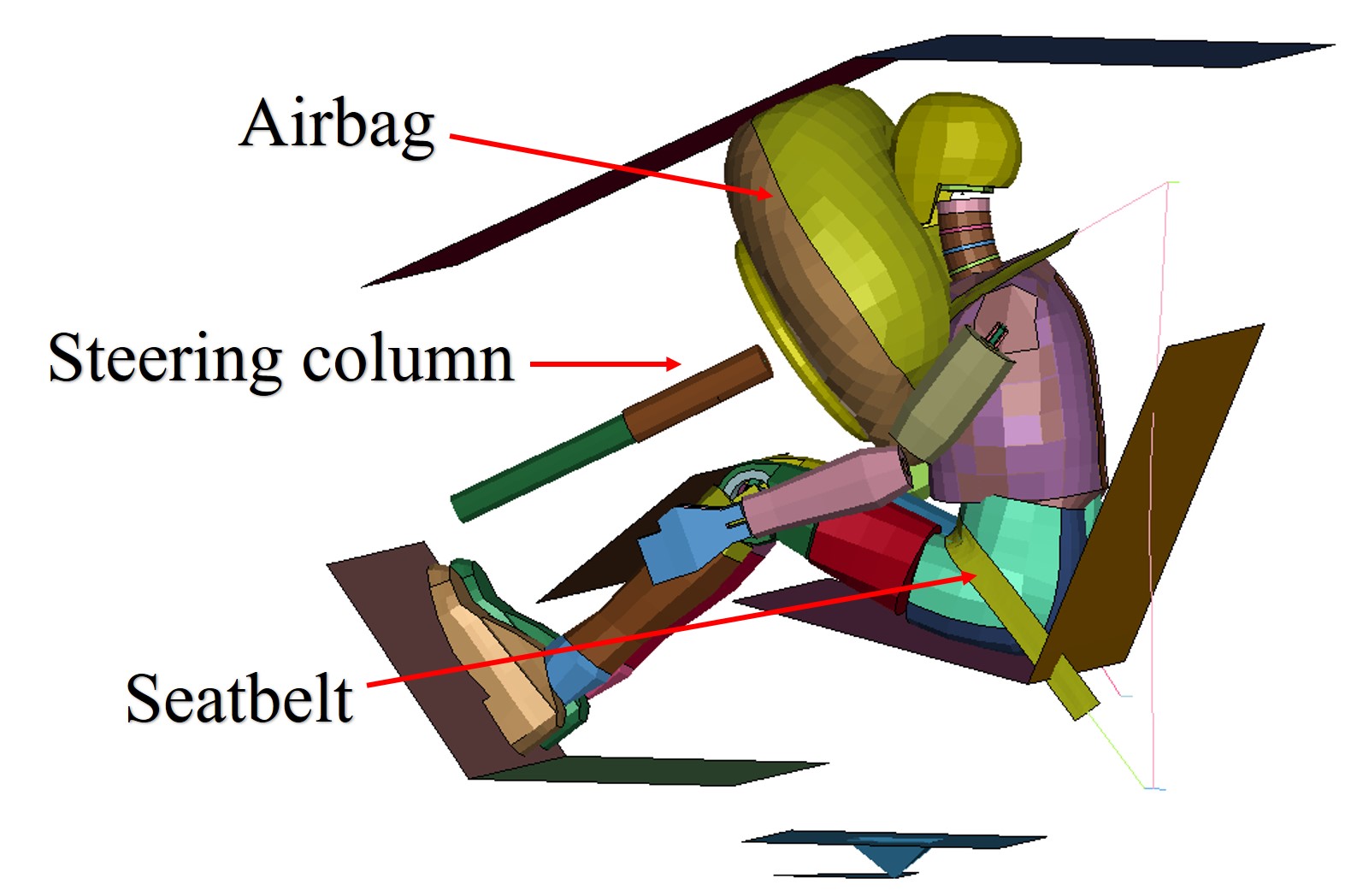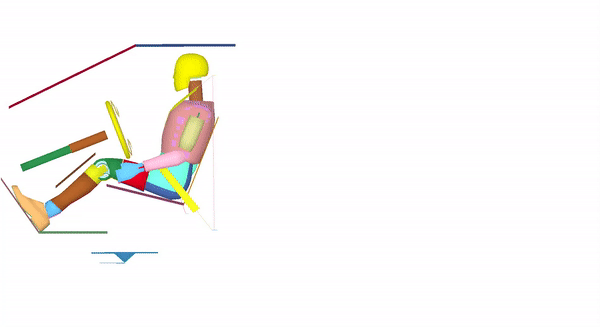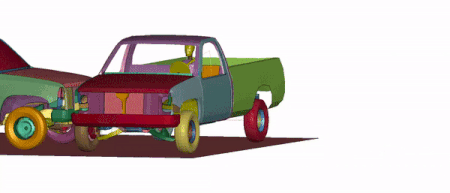Risk of Traumatic Brain Injury from Car Accidents
We have developed an approach to calculate the risk of TBI from car accidents. The total probability of TBI is assessed through the fusion of data from an experiment-based risk model and data stemming from finite element (FE) simulations. The proposed approach is based on a framework which includes FE simulations of vehicles crashes with dummy and an FE model of the brain using loading conditions derived from the crash simulations. The fusion of data leads to a risk model that can account for sources of uncertainties such as the brain material properties or crash conditions uncertainties (e.g., impact angle or velocity).
Example of crash simulation with dummy (model run with LS-Dyna).

Movie 1: Ls-Dyna simulation of a frontal crash test.
The accelerations are then transferred to a finite element model of the brain (SIMon). The movie below shows the evolution of maximum principal strain in the brain subjected to the accelerations during the crash.

Movie 2: Ls-Dyna simulation of brain motion during a crash.
Stochastic Optimization of Occupant Restraint System Based on the Probability of Traumatic Brain Injury
Vehicle crashes are one of the major causes of hospitalizations and deaths related to Traumatic Brain Injuries (TBI) in the US. Therefore, it is significantly important to improve vehicle crashworthiness to reduce the risk of TBI.
|
Movie 3: Ls-Dyna simulation of a frontal crash. |
Movie 4: Ls-Dyna simulation of a side crash. |
Car and dummy models provided by National Highway Traffic safety Administration and Livermore Software Technology Corporation.
We are working on the optimization of an occupant restraint system based on the probability of Traumatic Brain Injury (TBI) to improve the safety of the vehicles. In this work, we are developing an optimization algorithm based on a stochastic kriging and an adaptive sampling method to address the existing challenges such as the need for accounting for the noise in crash simulations and uncontrollable random parameters (e.g., impact velocity and acceleration). The algorithm is implemented on a crashworthiness problem that involves a sled and dummy models subjected to an acceleration pulse. The sled model includes components of a vehicle occupant restraint system such as an airbag, seatbelt, and steering column.

Figure 1: LS-Dyna models of a vehicle occupant restraint system and a dummy.
A TBI injury metric named as Brain Injury Criterion (BrIC) is used to quantify the level of damage to the brain during a crash, and an experiment-based risk model is used to calculate the probability of TBI based on the injury metric.

Movie 5: LS-Dyna animation of a sled subjected to a linear acceleration pulse.
References:
, “Construction of a Risk Model Through the Fusion of Experimental Data and Finite Element Modeling: Application to Car Crash-Induced TBI”, Computer Methods in Biomechanics and Biomedical Engineering, vol. 22, 2019, pp. 605-619.
, “Risk Prediction of Traumatic Brain Injury From Car Accidents”, Proceedings of the ASME International Mechanical Engineering Congress and Exposition, Tampa, FL: American Society of Mechanical Engineers, 2017.
, “Crashworthiness Optimization Based on the Probability of Traumatic Brain Injury Accounting for Simulation Noise and Impact Conditions”, Proceedings of the ASME International Mechanical Engineering Congress and Exposition, Virtual Conference: American Society of Mechanical Engineers, 2020.
, “Stochastic Kriging for Crashworthiness Optimization Accounting for Simulation Noise”, Proceedings of the ASME International Design Engineering Technical Conferences and Computers and Information in Engineering Conference, Virtual Conference: American Society of Mechanical Engineers, 2020.
Theme by Danetsoft and Danang Probo Sayekti inspired by Maksimer



